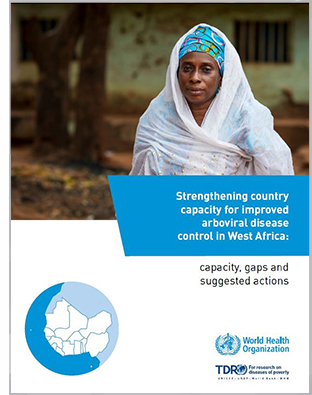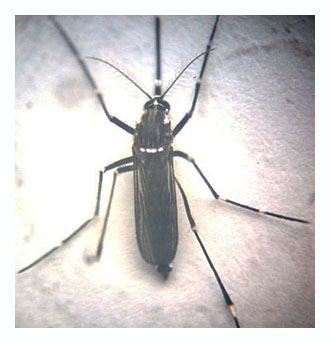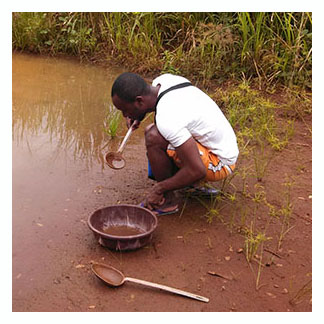With urbanization, the threat of arboviral diseases spread by mosquitoes in Africa has raised the question of the adequacy of health systems to detect, prevent and respond to outbreaks in a timely, efficient manner.

The challenge can only be addressed through an understanding of the existing capacity of countries for arboviral disease surveillance (epidemiological and entomological) and control and identification of the countries that require strengthening in these areas. Efforts to prevent and control arboviral diseases include epidemiological surveillance with detection and management of cases as well as entomological surveillance and control of vectors, as outlined in the framework of the Global Vector Control Response.
In 2018, in recognition of the situation, 16 West African countries conducted a situation analysis of existing resources in the region with the support of TDR, the WHO Department of Control of Neglected Tropical Disease (NTDs) and the West African Health Organization (WAHO) to identify needs and to target capacity-strengthening interventions.
The survey revealed that the region has some capacity in epidemiological and entomological surveillance and vector control, but these need to be strengthened to ensure timely detection of arboviral infections and better preparedness against epidemics.

In general, the countries have national plans for disease surveillance, mandatory notification for some diseases and task forces for epidemic preparedness, as well as preparedness plans. However, they have limited capacity for detection and confirmation of the circulating virus or for collecting and processing essential data to prevent potential outbreaks.
Routine virological surveillance, management of severe cases and entomological surveillance are, for instance, limited. Their procedures lack technical and operational standardization as well as harmonization of case definitions. Clear operational work plans that define the conduct of epidemiological and entomological surveillance and control appear to be lacking in some countries, as are resources and, sometimes, coordination among sectors working in the field.
“The current survey will pave the way for building capacity at regional and country level to detect, manage and control potential outbreaks in Africa,” said Dr Raman Velayudhan, Head of the Veterinary Public Health, Vector Control and Environment unit at the WHO NTD Department. “Rapid growth of cities, movement of people and goods and climatic factors all contribute to the spread of arboviral diseases across the continent.”
 Given the urgent need to prepare African countries’ health systems against the threat of arboviral diseases, the WHO NTD Department, the WHO Regional Office for Africa (AFRO) and TDR launched a similar evaluation for central, eastern and southern Africa earlier this year. This survey will help to identify strengths and common gaps and can serve as a baseline survey for guiding planning activities for arboviral diseases surveillance and control at country and regional level.
Given the urgent need to prepare African countries’ health systems against the threat of arboviral diseases, the WHO NTD Department, the WHO Regional Office for Africa (AFRO) and TDR launched a similar evaluation for central, eastern and southern Africa earlier this year. This survey will help to identify strengths and common gaps and can serve as a baseline survey for guiding planning activities for arboviral diseases surveillance and control at country and regional level.
“There is increasing evidence that both endemic and epidemic transmission of dengue, chikungunya, and other arboviruses regularly occur in sub-Saharan Africa,” said Dr Chanda Emmanuel, Technical Officer, Vector-Borne Diseases Control, WHO AFRO. “With urbanization, the threat is growing, and countries urgently need to be prepared. This baseline survey is key for guiding the regional plan of action”.
For more information, please contact Dr Corinne Merle, TDR.

